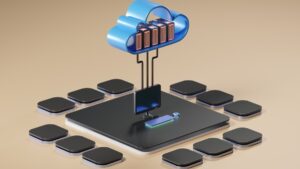Understanding the Role of Technology in Modern Trade Finance

Trade finance has always been a complex area. It involves many players including banks, exporters, importers, and regulators. Each party depends on clear records, trusted documents, and reliable payments. In the past, much of this work relied on paper forms and manual checks, but today, technology is changing how trade finance operates, making processes faster, safer, and more transparent. At the same time, it is creating new challenges around data, systems, and security.
To understand how technology is shaping this field, keep reading to learn more about the main areas where change is happening.
Digitalisation of Paper Processes
Trade finance has long been known for heavy paperwork. Bills of lading, letters of credit, and customs forms often pass through many hands before a transaction is complete. Paper documents are slow to move, easy to lose, and vulnerable to fraud. Digitalisation is reducing these risks. Many banks and trading firms now use electronic records instead of physical ones, a shift that cuts down delays and makes information easier to track. Regulators are also supporting digital documents, giving them legal weight.
This change does not happen overnight. Some regions still rely on traditional paperwork due to limited infrastructure or regulation, but the trend is clear: digital records are rapidly replacing paper, making trade finance more efficient and more resilient to errors. Over time, digitalisation is likely to become the known standard.
The Role of Trade Finance Software
Managing trade finance transactions requires coordination across banks, exporters, and buyers. Trade finance software brings all of these parties together on one platform and automates tasks like document checking, compliance screening, and payment tracking, reducing human error and speeding up the entire process. For banks, this means better risk management and faster decision-making, and for businesses, it lowers the time and cost of completing deals.
Modern platforms often include dashboards that provide real-time updates and also link directly to other systems, such as enterprise resource planning tools. Adoption is not always smooth, as it requires investment and training, and smaller firms may find the cost difficult at first. But still, as more providers enter the market, the technology is becoming more accessible. The use of trade finance software shows how digital tools can turn a slow, paper-heavy process into something more agile and reliable.
Blockchain and Trust in Transactions
One of the most talked about technologies in trade finance is blockchain. At its core, blockchain is a shared digital ledger that cannot be easily altered. Each transaction is recorded in a way that is transparent and secure. For trade finance, this means less reliance on intermediaries to verify documents. A bill of lading stored on blockchain, for example, can be confirmed instantly by all parties, reducing delays and the risk of fraud. In fact, some pilot projects have shown how blockchain can shorten previously week-long processes down to a few hours.
However, challenges remain. Blockchains need widespread adoption to be effective, and not all companies are ready to join such networks. Energy use and system costs are also points of debate. Even so, blockchain has opened the door to a new way of building trust in global trade, especially where parties are dealing across borders.
Artificial Intelligence (AI) and Data Use
AI is another area shaping modern trade finance. Large volumes of data move through banks and trade platforms every day, and checking these records by hand takes time and effort. AI systems can scan documents quickly, spot errors, and flag risks. This is useful for compliance with regulations such as anti-money laundering rules, and it also helps to detect fraud attempts before they cause harm. Beyond compliance, AI can also analyse trade patterns and forecast risks in supply chains. For example, it can predict the likelihood of delays or defaults based on past behaviour. These insights help banks and businesses make better decisions.
However, AI is not without limits. It depends on clean, accurate data: if the data is poor, the results can be misleading. While automation reduces human workload, people are still needed to make final judgments. But ultimately, used well, AI supports efficiency without replacing human oversight.
Cybersecurity and System Risks
As more trade finance processes move online, cybersecurity has become a critical issue. Digital platforms store masses of sensitive information including contracts, payments, and identification documents, making them targets for cybercriminals.
A data breach can significantly damage trust and cause devastating financial loss. To reduce these risks, naturally, firms are investing in considerably stronger protections, including encrypted communication, multi-factor authentication, and real-time monitoring of networks. Regulators are also paying closer attention, requiring banks and service providers to meet strict security standards.
However, it is crucial to remember that technology itself cannot remove all risks. Human error, such as weak passwords or careless sharing of information, remains a common problem. Regular cybersecurity training and awareness building is the best way to avoid this; avoiding human error is just as important as investing in technical tools.




